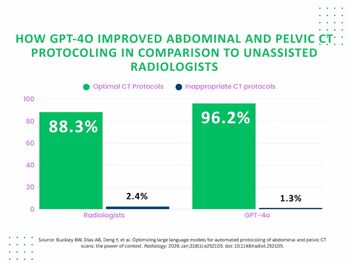
Optical Coherence Tomography Gaining Ground as Major Modality
Once limited to research and use by eye specialists, optical coherence tomography (OCT) is emerging as a major imaging modality. OCT is more sensitive than ultrasound, experts said, and now researchers and clinicians are now finding ways to use OCT to guide esophageal and cervical biopsies.
Once limited to research and use by eye specialists, optical coherence tomography (OCT) is emerging as a major imaging modality.
“OCT has been around for a long time, but primarily as a research project; it was difficult to commercialize,” said Bill Sanford, CEO of Imalux Corp., a medical device company dedicated to OCT. Thanks to some breakthroughs in the science, the technology is now applicable in a variety of settings, and becoming recognized as one of the major imaging modalities, he said.
OCT is similar to ultrasound, but instead uses infrared light, enabling technicians and physicians to see tissues below the surface and determine tissue structures, Sanford explained. It generates real-time cross-sectional images. OCT is far more sensitive than ultrasound, he said, and now researchers and clinicians are now finding ways to use OCT to guide esophageal and cervical biopsies.
“Our breakthrough was the establishment of a ‘common path’ to get real time evaluation of tissue with a probe that touches the surface one is imaging,” Sanford said, explaining that a major challenge with OCT has been with creating a flexible probe that is interchangeable and able to be sterilized and reused.
Imalux is using the technology to image epithelial tissue - everything from your nose to lungs, mouth, anus, kidneys, bladder, and skin - where 60 percent of all cancers form, Sanford said. Their application is primarily to guide biopsies or surgeries, scanning tissues to a depth of 1.5 mm, which is nearly twice as deep as where epithelial cancers form, he said.
In a study in the March issue of Lasers in Surgery and Medicine, researchers found that
Researchers at the Massachusetts Institute of Technology developed an imaging system using OCT that enables the 3-D imaging of subsurface microscopic
The MIT team is one of a number of research groups - including at Johns Hopkins University; the University of California, Irvine; Case Western University; and Massachusetts General Hospital - working on smaller, faster endoscopic OCT systems.
Newsletter
Stay at the forefront of radiology with the Diagnostic Imaging newsletter, delivering the latest news, clinical insights, and imaging advancements for today’s radiologists.




























